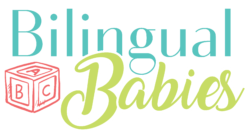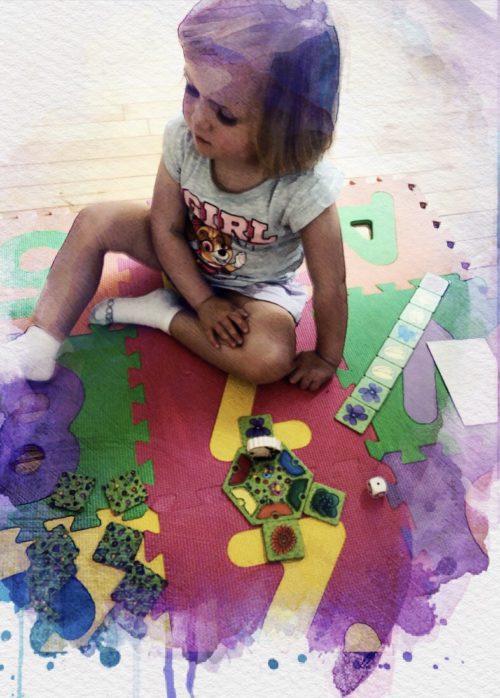Playing boardgames with your children offers great opportunities to interact with them using the minority language. Many boardgames allow you to focus on certain language aspects in a fun and playful way. For example, just by rolling the die, you can practice counting and numbers. Some games help with building vocabulary by focusing on certain word fields such as colors, fruits, animals etc. Or you can use them to simply expose your children to a piece of minority culture while just having fun. Keeping language acquisition fun and engaging is key for children in order to build a positive, lasting relationship with the minority language. In a nutshell, playing is the best way for children to get engaged, learn, socialize, and communicate with others.
Here are some boardgames that are staples in many German households.
But you do not need to speak German. All of these games come with instructions in a variety of languages!
Memory (ab 2+ Jahren)
Memory doesn’t need much of an explanation. It’s a classic. But if you would like to include a language-angle, you can use a certain word field (e.g., memory with animals, a memory with school supplies etc) or you can make sure that the memory cards have an image AND the word written on them. That way you can have your child read the word in the target language. Tips: if your child’s attention span is still a bit short, use only half of the cards to shorten the game time.
Obstgarten (ab 2+ Jahren)
This is a simplified version of a classic boardgame: Obstgarten (“Orchard”). It was adapted so children as young as 2 years can play the game. The goal of the game: All players have to work as team to pick all the fruits from the tree before the raven reaches the end of the path. If the players manage to harvest all fruits, they win together. If the raven reaches the end of the path before they players have picked all the fruits, the players lose against the raven. The nice quirk: no player gets singled out for winning or losing. It’s all a team effort. Great game to build teamwork and practice fruit vocabulary.
Affenbande (ab 2+ Jahren)
This is a true beginner’s game to get children started with boardgames. Plus, it’s great to practice colors. Every player gets a board with six circles of a certain color. For example, the player who picks green gets the board with the green circles. There are four colors total and six monkeys per color: 6 green monkeys, 6 yellow monkeys, 6 red monkeys and 6 blue monkeys. All monkeys remain in a satchel and players take turns drawing a monkey from the bag. The monkey needs to be placed on the board of the person who has the matching color. For example, if a yellow monkey is drawn, the person who has the yellow board will get that monkey. The first player who has all 6 monkeys together on the board wins.
Lotti Karotti (ab 4 Jahren)
This is a crazy bunny race! Each player has four rabbits that race up the mountain to get to the big carrot. Players take turns to draw a card. A card tells a player what to do. For example, a card will tell a player how many spaces he can move, or whether he need to twist the carrot, and then the player needs to perform that action. If a player gets a “twist the carrot” card this will cause several spaces on the board to change from ‘normal space’ to ‘open hole’. If a player’s rabbit falls through a hole, it’s lost! The first player to reach the carrot wins.
Mensch ärgere dich nicht (ab 4 Jahren)
A classic that sold over 70 million times! Each player has 4 game pieces that they need to get from the “starting area” to their “home base.” Players take turns rolling the role die and moving forward. On their way, players have to pass one another’s areas and can be kicked back to their starting area, meaning they have to start their journey to their home base over again. Important part: do not get angry when you get kicked out! A good game for practicing basic numbers.
Schnappt Hubi! (ab 5 Jahren)
Hubi is a hungry little ghost who stole your snacks! Your job: catch Hubi and get your snacks back. But the walls in the house are tricky. Sometimes you can get through, sometimes you can’t. You have to use the magic compass (an electronic audio system that talks to you and tells you where to go) in order to navigate through the house to finally catch Hubi! Because of the electronic system, each game is different. The nice feature of this game for language: you can practice listening comprehension in German because you need to listen to and follow the instructions of the magic compass.
Fang den Hut (ab 6 Jahren)
Called “Trap the cap” in English, this boardgame needs strategy and a bit of luck to win. Each player tries to hunt and collect as many caps from other players as they can. They do so by landing on the exact same field as another cap, then they need to bring their bounty back to their home base without getting caught by another player’s cap. Numbers, colors, and strategy are the main foci of this game.
Deutschlandreise (ab 8 Jahren)
This is a boardgame for children who are 8 years and older. Each player gets a few destination cards with locations in Germany. Players then have to move across Germany (i.e., the board) by rolling a die. The first player who has visited all of her destinations and gets back to the starting place, wins the game. Bonus: children can learn about geography and cultural sites.
Many thanks for reading! Friends of mine with young children have also recommended Einhorn Glitzerglück, Spinderella and Dobble, but we still need to try those ones out.


1 comment
I couldn’t agree more! Boardgames are a fantastic resource 🙂 My 7-year old loves our weekly boardgame night and our youngest is beginning to show interest. Thank you for the Uno suggestion… I’ll add that to my Amazon basket. 😉